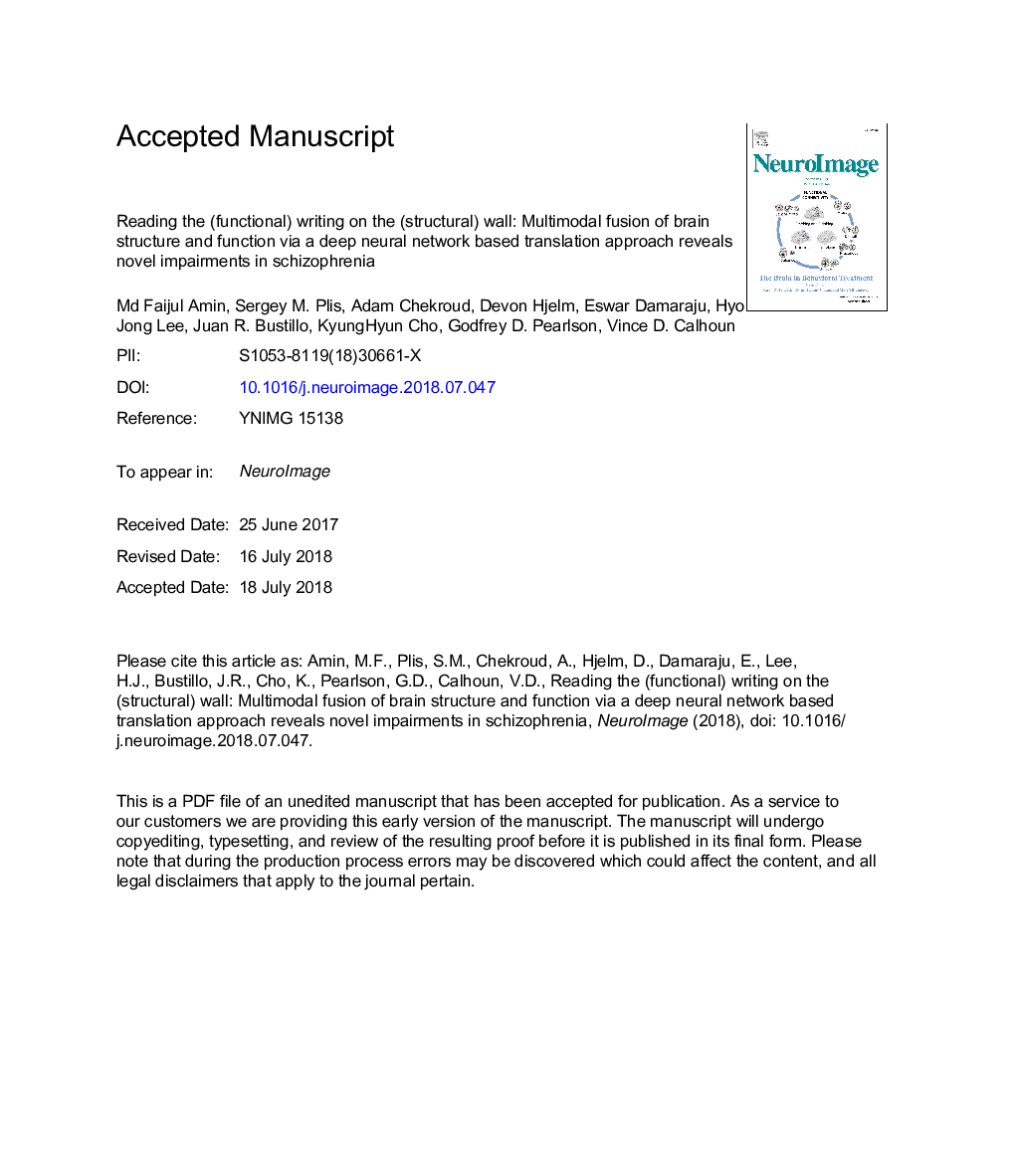| کد مقاله | کد نشریه | سال انتشار | مقاله انگلیسی | نسخه تمام متن |
|---|---|---|---|---|
| 8686674 | 1580830 | 2018 | 41 صفحه PDF | دانلود رایگان |
عنوان انگلیسی مقاله ISI
Reading the (functional) writing on the (structural) wall: Multimodal fusion of brain structure and function via a deep neural network based translation approach reveals novel impairments in schizophrenia
ترجمه فارسی عنوان
خواندن (کارکردی) نوشتن روی دیوار (ساختاری): تلفیق چندجملهای ساختار و عملکرد مغز از طریق یک رویکرد ترجمه مبتنی بر شبکه عصبی عمیق، اختلالات نوین در اسکیزوفرنی را نشان می دهد
دانلود مقاله + سفارش ترجمه
دانلود مقاله ISI انگلیسی
رایگان برای ایرانیان
کلمات کلیدی
تلفیق چندجملهای، یادگیری عمیق، روانپریشی جنون جوانی،
موضوعات مرتبط
علوم زیستی و بیوفناوری
علم عصب شناسی
علوم اعصاب شناختی
چکیده انگلیسی
This work presents a novel approach to finding linkage/association between multimodal brain imaging data, such as structural MRI (sMRI) and functional MRI (fMRI). Motivated by the machine translation domain, we employ a deep learning model, and consider two different imaging views of the same brain like two different languages conveying some common facts. That analogy enables finding linkages between two modalities. The proposed translation-based fusion model contains a computing layer that learns “alignments” (or links) between dynamic connectivity features from fMRI data and static gray matter patterns from sMRI data. The approach is evaluated on a multi-site dataset consisting of eyes-closed resting state imaging data collected from 298 subjects (age- and gender matched 154 healthy controls and 144 patients with schizophrenia). Results are further confirmed on an independent dataset consisting of eyes-open resting state imaging data from 189 subjects (age- and gender matched 91 healthy controls and 98 patients with schizophrenia). We used dynamic functional connectivity (dFNC) states as the functional features and ICA-based sources from gray matter densities as the structural features. The dFNC states characterized by weakly correlated intrinsic connectivity networks (ICNs) were found to have stronger association with putamen and insular gray matter pattern, while the dFNC states of profuse strongly correlated ICNs exhibited stronger links with the gray matter pattern in precuneus, posterior cingulate cortex (PCC), and temporal cortex. Further investigation with the estimated link strength (or alignment score) showed significant group differences between healthy controls and patients with schizophrenia in several key regions including temporal lobe, and linked these to connectivity states showing less occupancy in healthy controls. Moreover, this novel approach revealed significant correlation between a cognitive score (attention/vigilance) and the function/structure alignment score that was not detected when data modalities were considered separately.
ناشر
Database: Elsevier - ScienceDirect (ساینس دایرکت)
Journal: NeuroImage - Volume 181, 1 November 2018, Pages 734-747
Journal: NeuroImage - Volume 181, 1 November 2018, Pages 734-747
نویسندگان
Sergey M. Plis, Md Faijul Amin, Adam Chekroud, Devon Hjelm, Eswar Damaraju, Hyo Jong Lee, Juan R. Bustillo, KyungHyun Cho, Godfrey D. Pearlson, Vince D. Calhoun,
